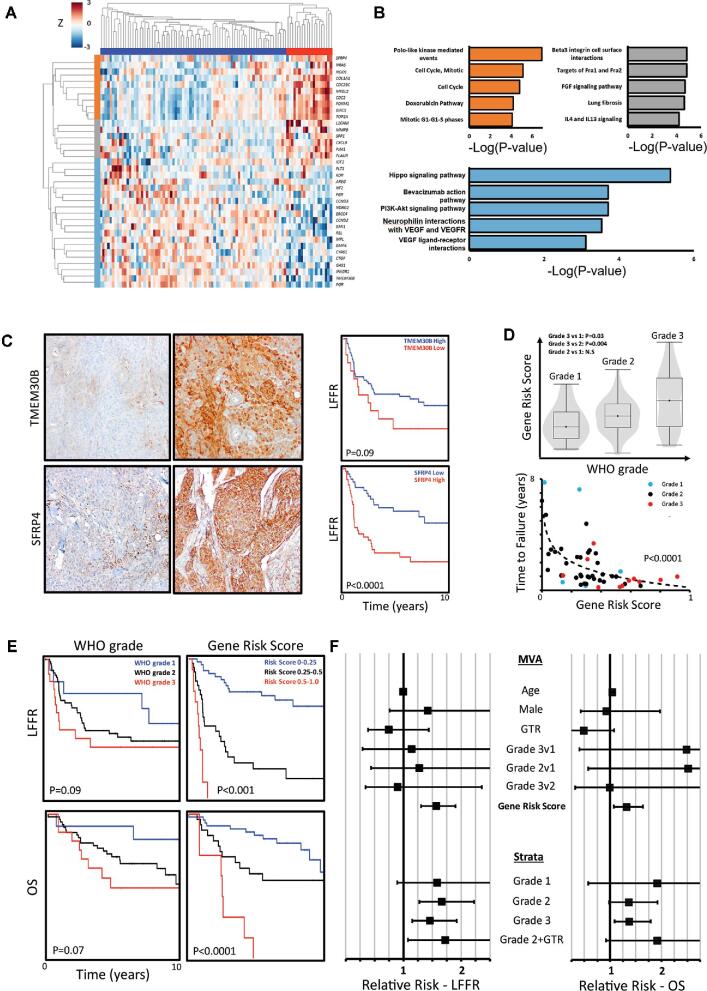FIGURE 1.
Targeted gene-expression analysis of clinically aggressive meningiomas identifies a prognostic gene signature. A, Unsupervised hierarchical clustering of prognostic genes identified using PAM confirms the ability of the gene set to stratify meningioma patients into high-risk (red cluster) and lower-risk categories (blue cluster, log-rank test, P < .0001). Gene expression is normalized by row. B, Gene enrichment analysis of prognostic gene clusters from A identifies a tightly correlated set of genes involved in cell-cycle processes (orange cluster), and clusters of genes involved in cellular signaling and extracellular matrix interactions (light blue and grey clusters). C, Representative IHC images demonstrating high TMEM30B staining on the top right (20x magnification) and low/absent TMEM30B staining on the top left. Similarly, representative IHC images demonstrating low SFRP4 staining (20x magnification) on the bottom left and high SFRP4 staining on the bottom right are shown. Low TMEM30B staining (15 of 96 meningiomas, 16%) is associated with a trend towards worse LFFR, and high SFRP4 staining (46 of 94 meningiomas, 49%) is significantly associated with worse LFFR. D, Elastic net regression was used to generate a gene-signature risk score between 0 and 1 per tumor sample (accuracy 0.80, AUC 0.86). Gene risk score correlates with tumor grade and is correlated with a faster time to failure (TTF) (TTF vs log(gene risk), P < .0001, F-test). Meningiomas with a gene risk score of greater than 0.5 uniformly recur within 2 yr of resection. Meningiomas which did not recur are not plotted. E, The gene-signature risk score outperforms WHO grade in stratifying LFFR (P < .001 vs P = .09, log-rank test) and OS (P < .0001 vs P = .07, log-rank test). F, After adjusting for age, sex, extent of resection, and grade using multivariate Cox regression, the gene-signature risk score is independently associated with recurrence (RR 1.56 per 0.1 risk score increase, 95% CI 1.30-1.90) and mortality (RR 1.32 per 0.1 increase, 95% CI 1.07-1.64). After stratifying patients by grade, the gene-signature risk score remains significantly prognostic for meningioma recurrence and mortality on univariate Cox regression. Further, among gross totally resected grade 2 tumors (Grade 2 + gross total resection (GTR)), the gene risk score is significantly prognostic of recurrence.

